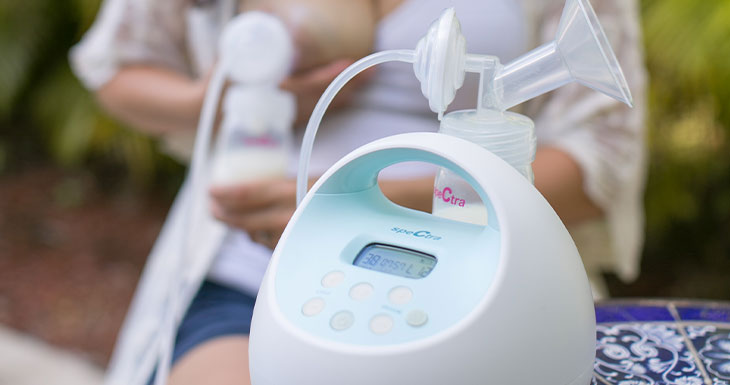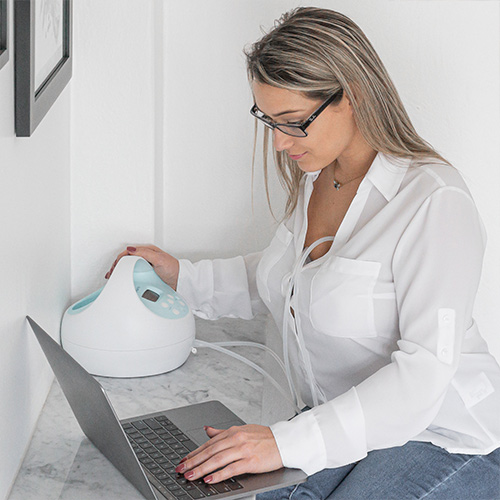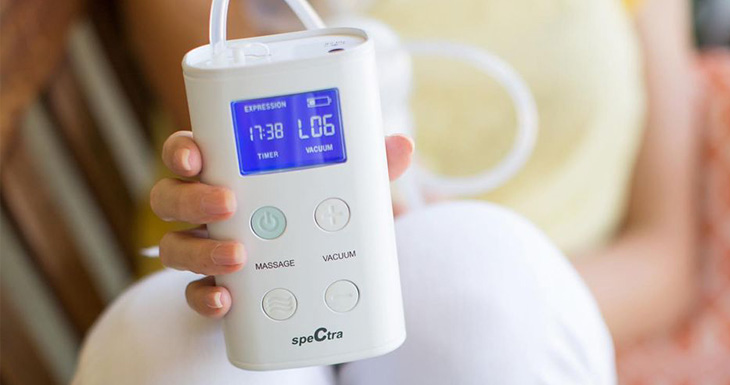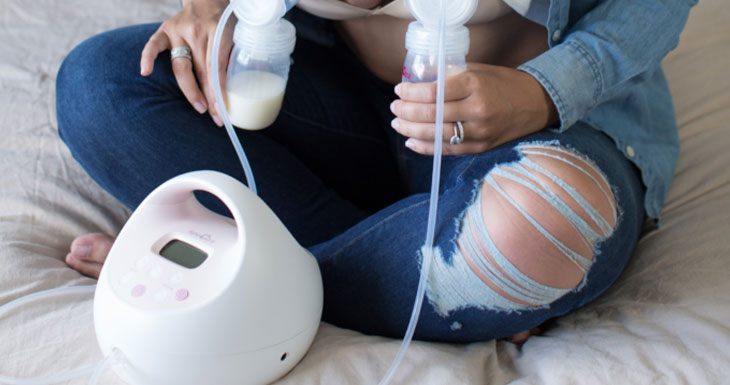Single Pumping vs Double Pumping

Melissa Portunato MPH, IBCLC, RLC
All Spectra baby USA electric breast pumps have the functionality to be used for single or double breast pumping. Research shows using double pumping will help drain the breasts better and make you more efficient. Yet, there could be times you might want to temporarily incorporate single pumping into your daily routine. Ultimately, the more frequently you express your milk, the more milk your body will make. The options are endless with the Spectra Baby USA pumps, and it’s nice to have a new trick in your back pocket to try. Read on to learn more about single pumping vs. double pumping.
Why Double Pump?
✔ Exclusively Pumping
Mothers may choose to exclusively pump for various reasons such as latching difficulties or concerns about baby’s weight gain. During the first 12 weeks postpartum, your body is establishing your milk supply. Research tells us that new mothers need at least 120 minutes of quality nipple/breast stimulation per day to establish and maintain a full milk supply. Dual pumping both breasts 8-12 times per day for 15-20 minutes will encourage healthy breastmilk production. Studies reveal when double pumping, moms see about 20% more milk. Double it up when exclusively pumping!
✔ While at Work
At work, time is limited and pumping often requires adding in some multitasking. Double pumping with a well-fitted pumping bra will free up both hands to type, take calls, or scroll through social media. It also allows for “Hands-on Pumping.” Moms that use their hands before, during, and after pumping see more milk too!
✔ On the Go
Even if you are at home with your newborn and other kiddos, you’re still working! Cooking, laundry, virtual school, or running errands, you are busy and often on the go. Double pumping saves you time! Combine double breast pumping sessions with our portable Spectra 9 Plus and you will never skip a beat during your busy day.
Why Single Pump?
✔ Slacker Boob
It’s normal for milk supply to fluctuate and to pump more milk on one side. If you are looking to increase milk from one breast, try temporarily adding a few quick single pumping sessions in addition to your regular double pumping sessions. Incorporating short single pumping sessions throughout your day can give your milk supply a boost. Even if you don’t see much milk at first, the increased stimulation will send a signal to your body to make more milk. Try it for three days and then stop to give your body a rest. It can take about a week to see an uptick.
✔ Clogged duct
Ouch! Clogged ducts can be painful! And though they may appear on both breasts, there’s typically one breast where they occur most often or more stubborn. Have you heard of “dangle pumping?” Just like the name indicates, dangle the breast into the flange to let gravity help drain the breast more effectively. Combine warm compresses with massage and compression while single “dangle pumping” to resolve clogged ducts fast.
✔ Skin to Skin when Pumping
Breastfeeding parents often get into the vicious “triple feeding” cycle – nursing, pumping, and bottle feeding. This routine can get old quickly and overwhelm the already exhausted breastfeeding dyad. If you feel exhausted from double pumping while watching your baby nearby, try single pumping while doing skin to skin! Single pumping with baby on your bare chest can help you relax and bond with your baby. It can also help increase milk-making hormones! Take a break and single pump while skin to skin with your baby. Try single pumping for 15 min on each breast while keeping your little one comfy on your bare chest. Enjoy those newborn snuggles!
✔ Building a small freezer stash
The general rule is to hold off on pumping for the first 6-8 weeks, depending on when you will start to be away from your baby. If you are nursing your baby and want to start storing breastmilk, add single pumping in between nursing sessions a few times a day for 15-20 min. You can expect to see about .25 – 1ounce. This strategy can help build a small freezer stash to help you prepare for your return to work or school. Planning can ease worry and make the transition easier for both you and your baby. The average milk stash is about a day’s worth of breastmilk 20-25 ounces. Remember, you will always be bringing home breastmilk for the next day too! Read more tips on returning to work here.
Breastfeeding is a journey! Families will often face obstacles, barriers, and challenges along the way. If your wish is to continue to breastfeed, don’t ever lose hope! With the right support, you can continue to meet your breastfeeding goals. We are here for you! Schedule a consultation with the Spectra IBCLC team or email us at IBCLC@spectrababyusa.com
Sources:
Bonyata, K. (2018, January 02). Exclusive Pumping • KellyMom.com. Retrieved July 27, 2020, from https://kellymom.com/mother2mother/exclusive-pumping/
Research on skin-to-skin contact. (2021, February 17). Retrieved March 10, 2021, from https://www.unicef.org.uk/babyfriendly/news-and-research/baby-friendly-research/research-supporting-breastfeeding/skin-to-skin-contact/#:~:text=Researchers%20found%20that%20holding%20babies,with%20obesity%20than%20other%20mothers.











